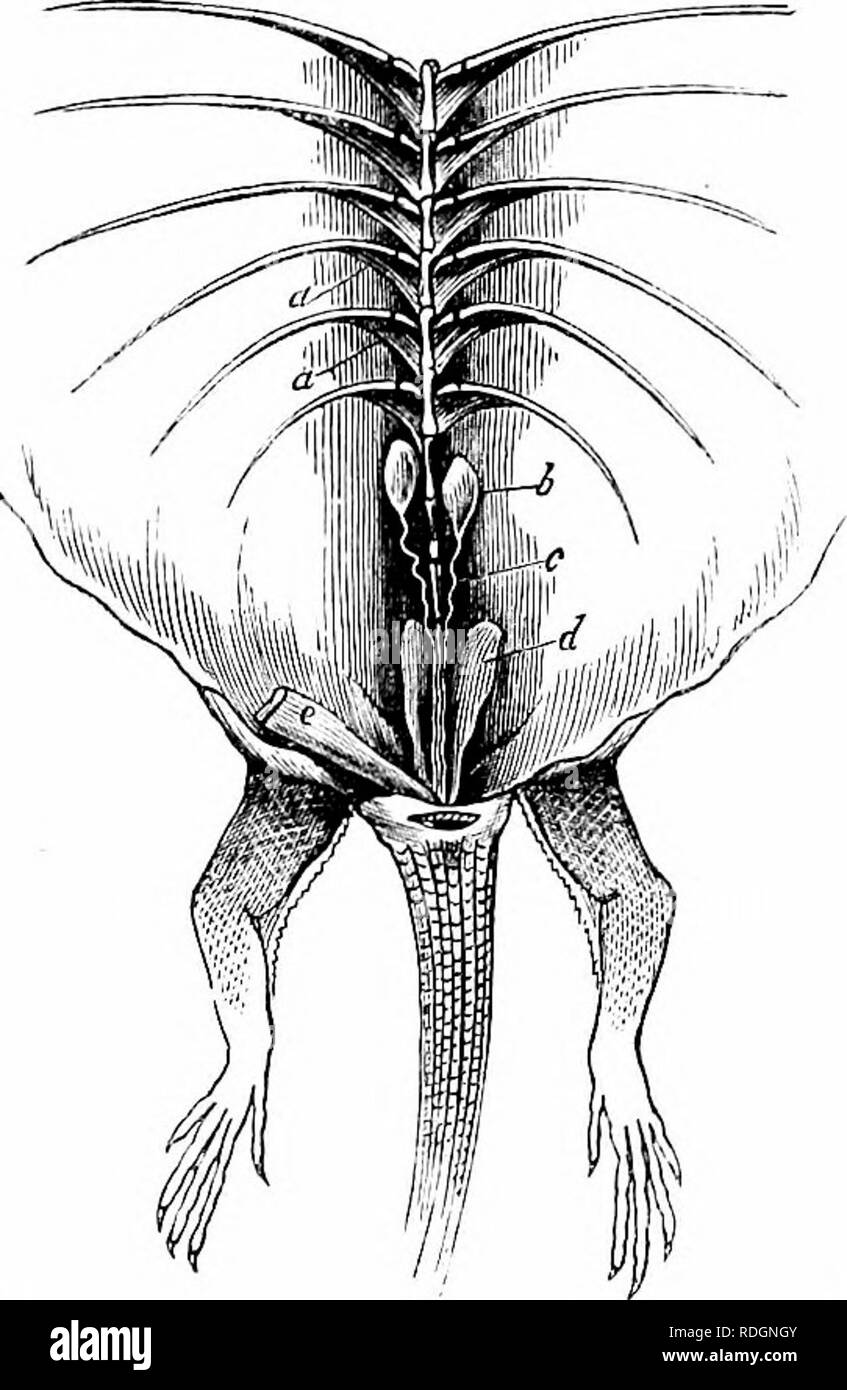. On the anatomy of vertebrates. Vertebrates; Anatomy, Comparative; 1866. MALE OKGANS OF KEPTILES. 581 stellate pigment-cells : in the Chameleon they give a Mack colour to the gland. The short and outwardly extended legs of Lizards serve for progression, not for support, and the animal rests with its belly on the ground, as in Serpents : hence the necessity not only for "S9 the internal position of the testes, but for the mechanism by which the intromittent organs can be inverted, and safely lodged out of sight, in the base of the tail, when not in use. In the Turtle {Chelone mi- das) eac

Image details
Contributor:
The Book Worm / Alamy Stock PhotoImage ID:
RDGNGYFile size:
7.1 MB (292.4 KB Compressed download)Releases:
Model - no | Property - noDo I need a release?Dimensions:
1276 x 1958 px | 21.6 x 33.2 cm | 8.5 x 13.1 inches | 150dpiMore information:
This image is a public domain image, which means either that copyright has expired in the image or the copyright holder has waived their copyright. Alamy charges you a fee for access to the high resolution copy of the image.
This image could have imperfections as it’s either historical or reportage.
. On the anatomy of vertebrates. Vertebrates; Anatomy, Comparative; 1866. MALE OKGANS OF KEPTILES. 581 stellate pigment-cells : in the Chameleon they give a Mack colour to the gland. The short and outwardly extended legs of Lizards serve for progression, not for support, and the animal rests with its belly on the ground, as in Serpents : hence the necessity not only for "S9 the internal position of the testes, but for the mechanism by which the intromittent organs can be inverted, and safely lodged out of sight, in the base of the tail, when not in use. In the Turtle {Chelone mi- das) each testis is an elongate, cylindrical, slightly bent body, decreasing in size at the end next the cloaca: the efferent tubes leave it near the fore or upper part of its concavity, and soon join the vas deferens, which forms a large and compact body by numerous convolutions, situ- ated between the testis and kidney. Each vas deferens ter- minates, with the ureter, in a papilla, the sjoermatic orifice being nearer the bladder. The penis is short, and is indicated, in the unexcited state, chiefly by the urethral groove; only the glans and the pointed end of the fibrocartilaginous body imme- diately above it jjroject from the cloacal surface, and these are partly enclosed by a thick duplicature of the cloacal membrane, representing a preputium: in the erection of the organ this fold is everted and obliterated. In the Emys europaa the testes, fig. 390, y, and convoluted siierm-duct, ib. c, are separated from the kidneys, ib. o, by the peritoneum, which, after giving an entire investment to the testes, is simply reflected over the contiguous surface of the kidney: an artery, I, s, runs between the two glands. The testis presents a full elliptic figure : its peritoneal covering is usually stained with a dark pigment: x is the spermatic artery, z the spermatic vein. The sjjerm-duct opens, close to the ureter, upon a papilla, fig. 391, F, at the commencement of the urethral groove, ib. G